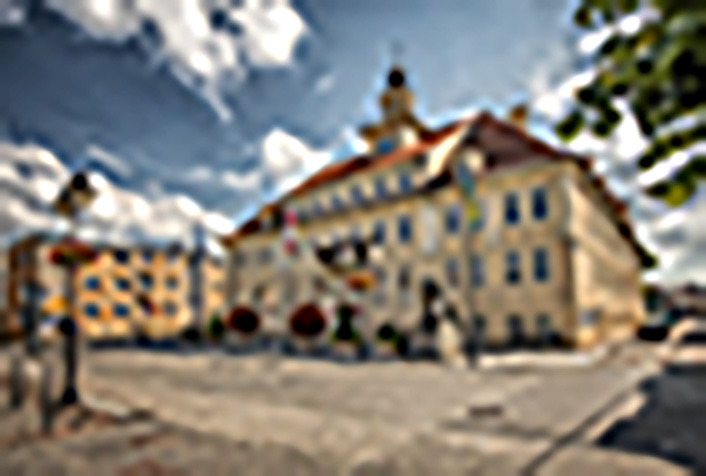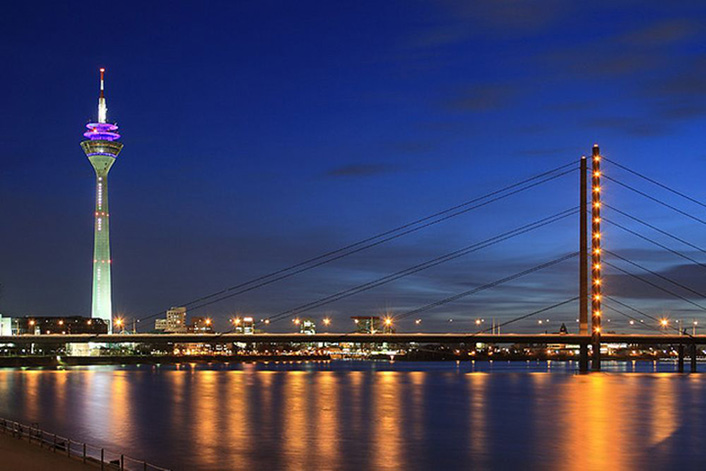How to travel from OLSZTYNEK to DUSSELDORF?
OLSZTYNEK

Olsztynek is a town in northeastern Poland, located in the Warmian-Masurian Voivodeship, Olsztyn County. It is a picturesque town with a rich history that serves as an important regional center in this part of the country.
Olsztynek is located in the central part of Warmia and Mazury, in a region of exceptional natural beauty. The town is close to lakes, forests and agricultural land, making it an attractive place for both living and tourism. In addition, Olsztynek lies about 25 kilometers from Olsztyn, the province's capital, providing easy access to the larger urban center.
Olsztynek has a long history, dating back to the Middle Ages. There are many historical monuments in the town center, such as the Church of St. Thomas the Apostle, which is one of the most important religious buildings in the region. Also worth noting is the Folk Building Museum, which showcases the region's traditional architecture and rich cultural heritage.
Olsztynek is well connected to the larger cities of the region, including Olsztyn, making it an attractive place to live for those working in the province's capital. The town is close to major national roads, providing convenient access to other parts of Warmia and Mazury and to other regions of Poland.
Olsztynek is a town in northeastern Poland, located in the Warmian-Masurian Voivodeship, Olsztyn County. It is a picturesque town with a rich history that serves as an important regional center in this part of the country.
Olsztynek is located in the central part of Warmia and Mazury, in a region of exceptional natural beauty. The town is close to lakes, forests and agricultural land, making it an attractive place for both living and tourism. In addition, Olsztynek lies about 25 kilometers from Olsztyn, the province's capital, providing easy access to the larger urban center.
Olsztynek has a long history, dating back to the Middle Ages. There are many historical monuments in the town center, such as the Church of St. Thomas the Apostle, which is one of the most important religious buildings in the region. Also worth noting is the Folk Building Museum, which showcases the region's traditional architecture and rich cultural heritage.
Olsztynek is well connected to the larger cities of the region, including Olsztyn, making it an attractive place to live for those working in the province's capital. The town is close to major national roads, providing convenient access to other parts of Warmia and Mazury and to other regions of Poland.
DUSSELDORF

Düsseldorf is the capital of the state of North Rhine-Westphalia and one of West Germany's largest cities. Here large industrial corporations are located, fashion days are held, nightlife flourishes, and art takes to the streets.
Düsseldorf - the city's attractions
Although Düsseldorf may seem extremely vast, most of the most famous attractions are close together. It is best to start your sightseeing with the old town. Although it mostly did not survive the air raids of World War II, it regained its former charm after reconstruction. One of the remnants of old Düsseldorf is the 16th-century town hall and the tower from the medieval castle that once existed here.
Art lovers can see exhibitions at the Kunstpalast museum or contemporary art displays at the Kunstsammlung. The latter museum is housed in as many as 3 buildings, one of which has a popular attraction - a 25-meter-high transparent net that you can walk on. Art in Düsseldorf is besides present on the streets, including at subway stations, in a gallery located in a tunnel or on the colorful Kiefernstrasse.
While in the city, take a stroll along the promenade leading along the Rhine, see the modern Medienhafen district, perfectly integrated into the old city, and take a cruise on the Rhine, which will give you a different perspective on Düsseldorf.
Düsseldorf - bus, train or plane?
Düsseldorf Airport operates close to the city. Public transportation in the city is well organized - you can use buses, streetcars, subways, but also the suburban railroad.
If you are planning to visit Düsseldorf, you can find a bus from your city to this colorful German metropolis on our website.
Düsseldorf is the capital of the state of North Rhine-Westphalia and one of West Germany's largest cities. Here large industrial corporations are located, fashion days are held, nightlife flourishes, and art takes to the streets.
Düsseldorf - the city's attractions
Although Düsseldorf may seem extremely vast, most of the most famous attractions are close together. It is best to start your sightseeing with the old town. Although it mostly did not survive the air raids of World War II, it regained its former charm after reconstruction. One of the remnants of old Düsseldorf is the 16th-century town hall and the tower from the medieval castle that once existed here.
Art lovers can see exhibitions at the Kunstpalast museum or contemporary art displays at the Kunstsammlung. The latter museum is housed in as many as 3 buildings, one of which has a popular attraction - a 25-meter-high transparent net that you can walk on. Art in Düsseldorf is besides present on the streets, including at subway stations, in a gallery located in a tunnel or on the colorful Kiefernstrasse.
While in the city, take a stroll along the promenade leading along the Rhine, see the modern Medienhafen district, perfectly integrated into the old city, and take a cruise on the Rhine, which will give you a different perspective on Düsseldorf.
Düsseldorf - bus, train or plane?
Düsseldorf Airport operates close to the city. Public transportation in the city is well organized - you can use buses, streetcars, subways, but also the suburban railroad.
If you are planning to visit Düsseldorf, you can find a bus from your city to this colorful German metropolis on our website.
© 2025 Sindbad
Technical support, assistance, payments: Sindbad IT
© 2025 Sindbad
Technical support, assistance, payments: Sindbad IT
